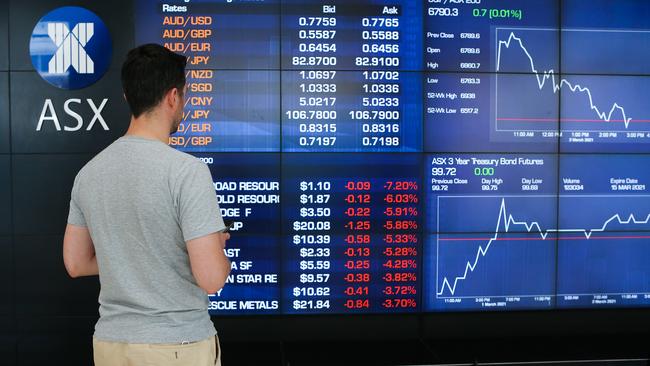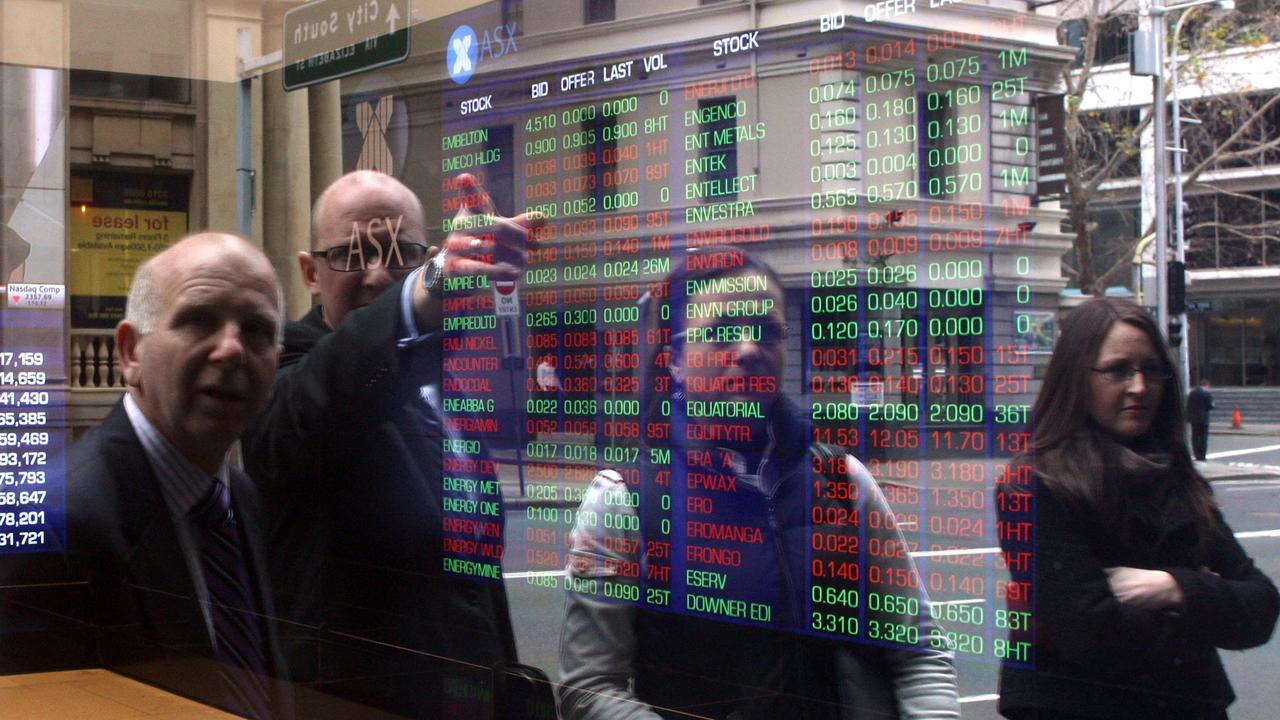A year on from the Covid meltdown, the future looks brighter
One year after the fastest bear market in history the Australian sharemarket has almost fully recovered on the back of a rapidly improving outlook for the economy and corporate earnings.

One year after the fastest bear market in history the Australian sharemarket has almost fully recovered on the back of a rapidly improving outlook for the economy and corporate earnings.
It was a year ago that the COVID-19 pandemic and associated lockdowns were pummelling the local market and the S&P/ASX 200 index plunged 8.6 per cent in a single day, sending investors into a panic not seen since the midst of the global financial crisis over a decade earlier.
The Australian dollar and bonds were also being pummelled.
The currency hit an almost two-decade low near US54c, having fallen since the start of the year, and the bond market braced for the worst, with the 10-year yield more than doubling to 2.5 per cent, prompting the Reserve Bank to aggressively intervene in the bond market.
At the same time, banks saw some of their biggest falls in the local market since the financial crisis.
Commonwealth Bank dived over 9 per cent, National Australia Bank and Westpac lost about 11 per cent and ANZ fell 12 per cent. But as the benchmark ASX 200 hit the low point, it was also a turning point as central banks around the word declared they would do whatever it takes to stabilise global markets.
With trillions pumped into the global economy, including hundreds of billions in Australia, banks have been among the biggest winners of major stocks, rising almost 80 per cent in the past 12 months.
One of the market’s poster-child stocks at the time (and now) was Afterpay. The buy now, paylater operator was arguably on the brink of implosion when it dived 36 per cent to $8.01 a share that day, before closing at $8.90, having fallen 80 per cent in four weeks.
Almost 11 months later, Afterpay had reached a record high of $160 — thanks in no small part to the timely purchase of a 4.7 per cent stake by Tencent, which is now worth over $1.4bn.
Such was the foresight needed to look through the turmoil and find those that could thrive.
After diving as much as 39 per cent from a record high of 7197.2 points just a few weeks earlier — marking the fastest move into a bear market, defined as a fall of at least 20 per cent — the share index suddenly bottomed and never looked back, thanks to swift action by central banks and governments globally to provide much needed liquidity and income support to the economy.
The RBA slashed interest rates and set a target for the three-year bond yield, subsequently cutting the cash and three-year bond rate 0.1 per cent and starting quantitative easing along with several other programs to ensure that banks had enough funds to lend.
Indeed, the reality turned out quite differently to what most investors expected at the time.
Not only did central banks and governments unleash an unprecedented degree of monetary and fiscal policy stimulus, the lethality and spread of the virus wasn’t as bad as expected, China bounced back strongly, and the development of numerous effective vaccines helped investors look forward to a recovery from what was in many cases the sharpest recession since World War II.
With vaccinations quickly bringing the pandemic under control and economic growth rebounding strongly — including a record rebound in Australia’s growth in the second half of the year — the outlook for economic growth and earnings globally is now undoubtedly positive.
“Right now the market is very confused,” said Bell Potter’s head of institutional sales and trading, Richard Coppleson.
“Many institutions have no real conviction about the direction in the short term.
“We have seen technology and growth stocks correct, but it’s too soon for them to have a rebound.
“The travel and value recovery is one everyone finally likes, but has it had its run for now? Some think it has and are waiting for a pullback to go again.”
Indeed the challenge for markets now is for growth and earnings to keep up with rising bond yields.
Offshore it's a similar story. Even after an 80 per cent rise in the S&P 500 and a 115 per cent rise in the 10-year US Treasury bond yield since then, US sharemarket volatility has continued to fall this week.
The VIX index of volatility on S&P 500 futures hit a 14-month low of 18.88 per cent on Monday, hinting that a 12-month floor near a long-term average of 19.5 per cent might finally be giving way.
Still, the sustained fall in US volatility from a record high of 85 per cent a year ago to a little below its long-run average came as US policymakers indicated that their fiscal and monetary stimulus will be sustained at an unprecedented pace, even as COVID vaccinations and economic reopening lessen risks from the pandemic.
Citi, for one, now finds it hard to justify chasing the US sharemarket on a valuation basis.
With the S&P 500 trading on a 12-month forward price-to-earnings multiple of about 22 times, Citi chief US equity strategist Tobias Levkovich says “equities are not set up for appreciation”.



